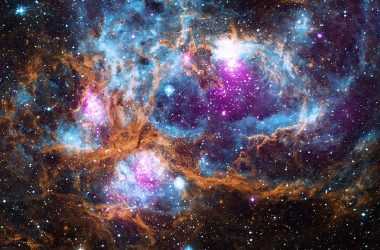Changes in cloud cover on Neptune from 2002 to 2023
Imke de Pater, Erandi Chavez, Erin Redwing (UC Berkeley)/W. M. Keck Observatory
The presence of clouds on Neptune has significantly diminished. Ever since the Voyager 2 spacecraft captured the first detailed images of the planet in 1989, its blue disc has been adorned with wispy white clouds. However, Neptune’s skies are now nearly clear. Although the planet is extremely distant from the sun, astronomers believe that the sun’s 11-year cycle may be responsible for the fluctuating cloud cover on Neptune.
A team of researchers led by Erandi Chavez from the University of California, Berkeley, examined cloud activity on Neptune from 1994 to 2022. They analyzed images from ground-based astronomical observatories and the Hubble Space Telescope. The study revealed that cloud cover on Neptune varied regularly, with particularly cloudy conditions in 2002 and 2015, and exceptionally clear skies in 2007 and 2020.
In 2020, cloud cover reached its lowest recorded level, making Neptune appear darker than ever before without any discernible white clouds. Chavez stated that even the latest images taken in June showed no signs of the clouds returning to their previous levels. This period of low cloud activity on Neptune was unprecedented in its duration and intensity.
The sudden disappearance of clouds on Neptune, particularly in 2019, took researchers by surprise. Imke de Pater, a member of the team from the University of California, Berkeley, expressed astonishment at how rapidly the clouds dissipated. De Pater stated, “We essentially saw cloud activity drop within a few months.”
The cloud cover pattern on Neptune appears to align with the sun’s 11-year cycle of activity, albeit with a two-year delay. When the sun is most active, more clouds seem to form on Neptune, while during periods of low activity, the planet’s clouds disperse. The phenomenon occurs because sunlight hitting the top of Neptune’s atmosphere triggers chemical reactions that lead to the formation of methane and other chemical clouds. These reactions take time, resulting in the lag between the sun’s extremes and Neptune’s cloud activity. It is surprising that this correlation exists since Neptune receives only 1 percent of the sunlight that Earth does due to its great distance from the sun. From Neptune, the sun appears more like a bright star in the night sky rather than the blinding orb observed from Earth.
It should be noted that the correlation between the sun’s activity and Neptune’s cloud cover is not yet definitively confirmed. While sunlight can initiate the chemical reactions that produce clouds on Neptune, it may also darken the clouds and hazes, making the cause and effect relationship more complex than initially assumed.
Additionally, Neptune occasionally experiences massive storms that originate deep within its atmosphere and rise to the surface. The role of these storms in the cloud cover fluctuations remains uncertain. The researchers continue to monitor Neptune to gain a better understanding of the intricacies of its cloud layers.
Topics:








